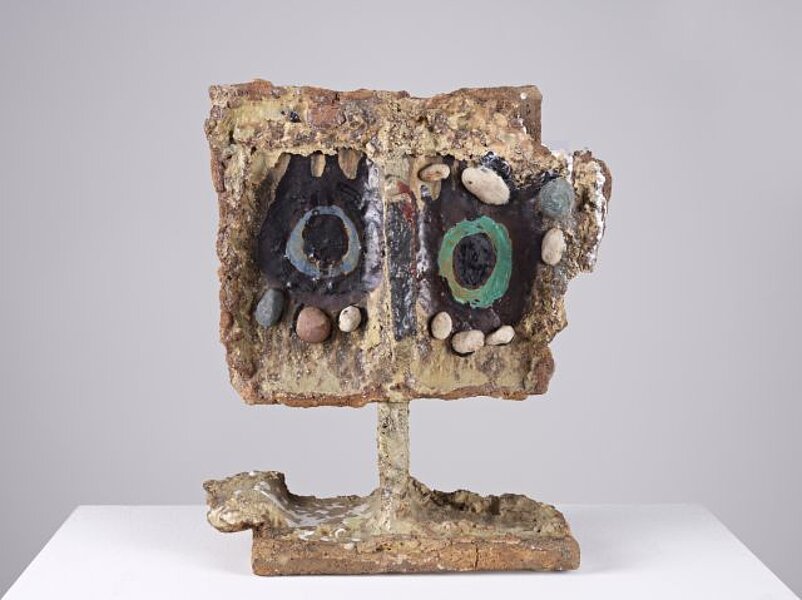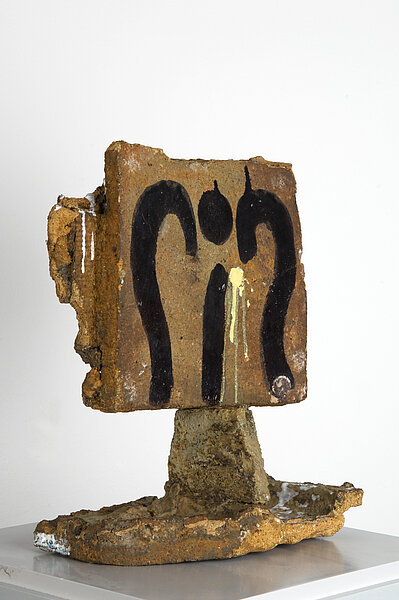
Miró, Joan
Artigas, Josep Llorens
Kopf
Head
1954
| Object description | Ceramic, painted |
|---|---|
| Material | |
| Technique |
object:
pottery techniques
|
| Dimensions |
object size:
height: 40 cm,
width: 32,5 cm,
depth: 24 cm
object:
weight: 7 kg
|
| Year of acquisition | 1961 |
| Inventory number | P 4/0 |
| Creditline | mumok - Museum moderner Kunst Stiftung Ludwig Wien |
| Rights reference | Bildrecht, Wien |
| Further information about the person | Miró, Joan [GND] | Artigas, Josep Llorens [GND] |
Joan Miró’s works are among the most important in Spanish surrealism, and like many of his contemporaries, and especially Picasso, in the mid-1950s he began to work in ceramics. Miró asked the Catalonian artisan Artigas to teach him the art of pottery. It was in Artigas’s studio that Miró made his ceramic sculpture “Head.” It is not made of potter’s clay, but of discarded fragments of an old furnace. The artist was particularly interested in seeing what these fragments and a pottery process that left a lot to chance would produce. The head is more or less square, and Miró has painted large childlike blue and green eyes on it, giving this sculpture an impish look. The eyes are emphasized by a dark background and small stones affixed around them. There are also fragments representing a thin rectangular nose and an ear, both colorfully painted. There is no mouth, which makes the head look a bit like a mask. Everything is focused on the large eyes that stare at us fixedly and amicably. On the reverse there is a number of black symbols, like those found in varying forms on many of Miró‘s paintings. To ensure that the varnish hardened, the artist baked this head immediately after he had painted it. He was fascinated by the unpredictable and the possibility of shaping a raw artwork. Using ceramics meant that he was finally able to unite the elements of earth and fire in painting. “I have been seduced by the shine of ceramics,” Joan Miró said, “it is as if sparks were flying.”
© mumok – museum moderner kunst stiftung ludwig wien


